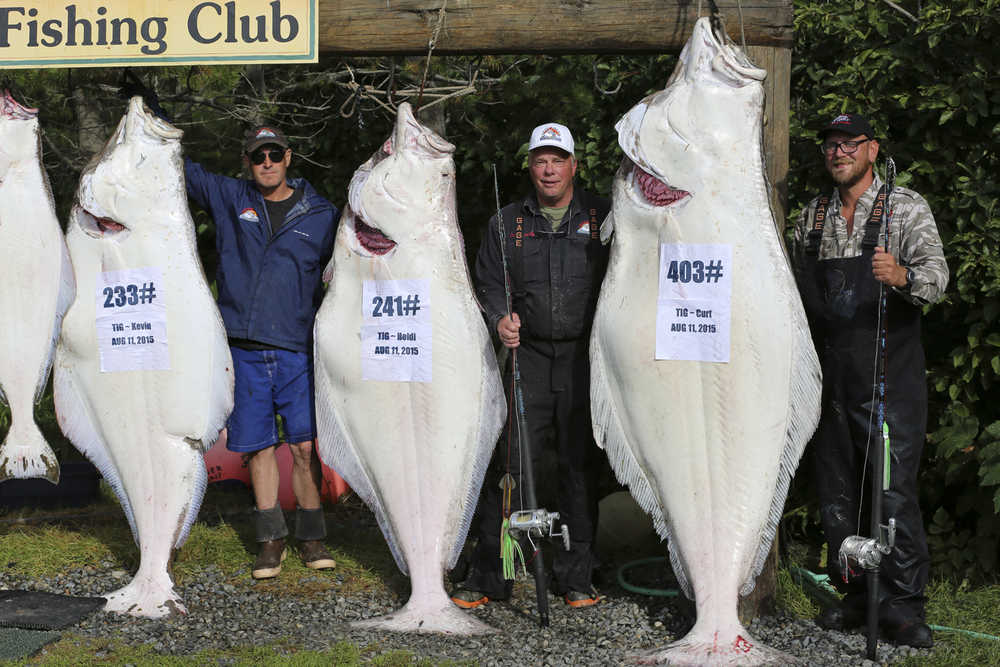Saltwater anglers fishing with the Deep Creek Fishing Club stumbled on a rarity in the Cook Inlet on Aug. 11; they brought up a 403-pound halibut and two halibut lager than 200 pounds.
The largest of the three, a 403-pound behemoth, was caught by Curt Wells, of San Diego. He landed the 8 foot, 1 inch beast while fishing aboard “The Kraken,” captained by James Wheeler.
Vivian Moe, of the Deep Creek Fishing Club, wrote in an email that Wells’ catch was accompanied by a 233-pounder being nabbed by Kevin Downey, of California, and a 241 pounder caught by Heidi Chase of New Mexico. Downey and Chase were on the Megalodon, captained by Steve “Captain Crusty” Moe.
Catches of that size are not common in the Cook Inlet.
Scott Meyer, fisheries biologist for the Alaska Department of Fish and Game, said Cook Inlet is known as a nursery area.
“There are a lot of shallow bays and inlets that are nursery areas. The average weight in Cook Inlet isn’t very high compared to other places along the coast,” Meyer said. “I don’t remember the last time there was a 400 pounder caught here, probably in the late 1990s?”
While it can be difficult to estimate the age of a halibut, Meyer said there is a lot of variation, he estimated that the 403-pound halibut was likely at least 20 years old.
The maximum recorded age for a halibut, male or female, is 55 years, according to the International Pacific Halibut Commission. However, in the Cook Inlet fish are much younger.
“Most of the fish we see in the sport harvest here are less than 30 years old,” Meyer said.
Spring and summer are typically the times to target halibut. During the winter months, the right-eyed flatfish will move from their shallow feeding grounds into deeper waters.
Meyer said catching a 400-pound halibut is “like winning the lottery,” but a bit of strategy can be involved as well.
“They may have found a hidey-hole,” he said of the charter captains who took the group out. “Fish of similar sizes or ages or sexes often aggregate together. So if you catch a big fish, you might want to stay in that spot. It might increase the changes of getting a big one.”
Reach Rashah McChesney at rashah.mcchesney@peninsulaclarion.com or follow her on Twitter @litmuslens

